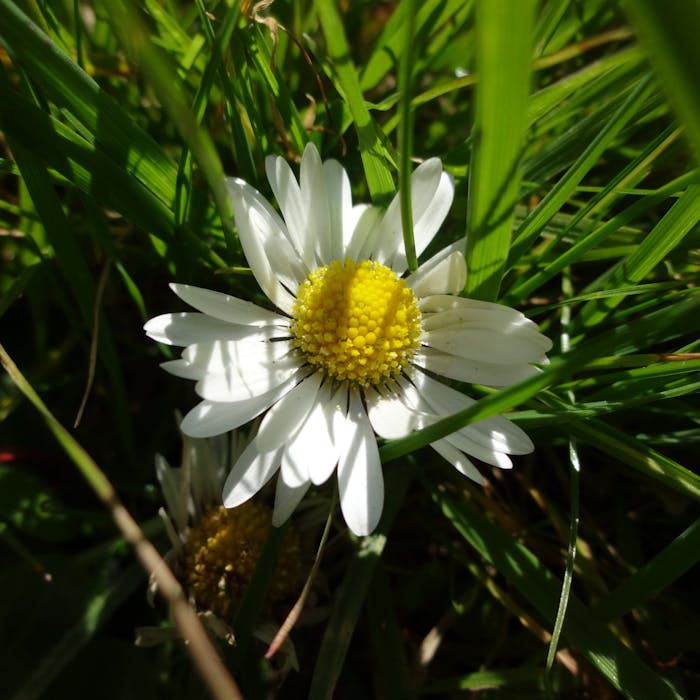
The common daisy, adornment of a sunny lawn
The common daisy is probably Britain's best known wildflower, carpetting many a lawn or grass verge with its long-lasting jolly white and yellow flowers. Purists might regard them as weeds, but to many they bring the spirit of summer.
In Old English, daisies were referred to as “day’s eye” because at night the petals close over the yellow centre, and during the day they re-open. The phrase “as fresh as a daisy” originated from this, signifying that someone had a good night’s rest.
Our daisy, Bellis perennis, is native to western, central and northern Europe, including remote islands such as the Faroe Islands and is a member of the aster family. Daisies have also been naturalised in other temperate regions of the world such as the Americas and Australasia.
Daisies can be seen flowering almost all year in the short turf they prefer. Their short stems and tolerance of trampling allow them to persist in well-used or well-mown lawns. In overcast weather they show their displeasure by closing their flowers, which are a valuable food source for hoverflies, honeybees and bumblebees.
The daisy chain is a traditional decorative art, undertaken by joining the flowers and stalks into strings that make pretty necklaces, headdresses and bracelets. The petals are also romantically plucked to answer the question 'he loves me, he loves me not'. Daisies can be eaten, and their leaves added to salads, and are even medicinal. Wild daisy tea is used to treat coughs, bronchitis, and inflammation.
Further reading
Links to external websites are not maintained by Bite Sized Britain. They are provided to give users access to additional information. Bite Sized Britain is not responsible for the content of these external websites.
